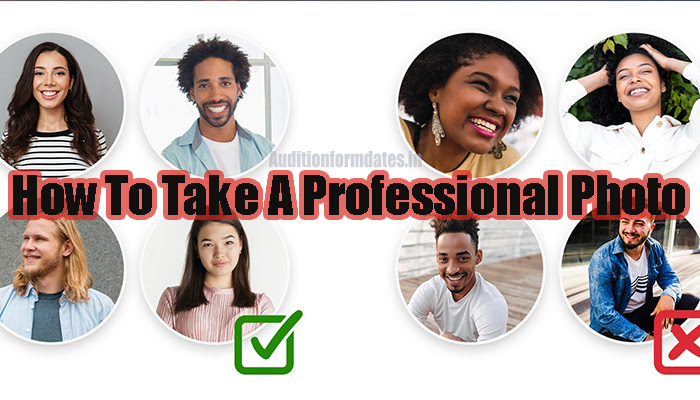How To Take A Professional Photo- Photography has become an increasingly valuable skill in both personal and professional realms. With the accessibility of high-quality cameras in smartphones and digital devices, the ability to take professional-grade photos is within reach for everyone. Whether you aspire to pursue photography as a career or simply wish to enhance your skills, mastering the art of professional photography can open doors to new opportunities. In this comprehensive guide, we’ll explore the value of professional photography and provide detailed steps on how to capture stunning images using both traditional cameras and smartphones.
How To Take A Professional Photo?
Contents
How To Take A Professional Photo Detail
| Choose the Subject | Select a subject that is visually appealing and aligns with your intended message or theme. Consider factors such as uniqueness, relevance, and visual impact. |
| Select the Right Camera | Choose a camera that suits your photography needs and preferences, ensuring it has the necessary features and capabilities for the type of photography you intend to pursue. |
| Adjust the Lighting | Manipulate natural or artificial light sources to create the desired mood, atmosphere, and emphasis on your subject. Understand how different lighting setups affect the final image. |
| Adjust Your Frame | Frame your subject effectively within the composition, considering factors such as balance, symmetry, and focal points. Utilize natural frames or leading lines to enhance visual interest. |
| Learn Your Camera Settings | Familiarize yourself with the settings and functionalities of your camera, including exposure, focus, aperture, shutter speed, and white balance. Understand how each setting impacts the image. |
| Category | How To |
How To Audition for TV Serials in 5 Steps?
Why Professional Photography Matters
Professional photography goes beyond simply capturing a moment; it’s about conveying a message, telling a story, and creating a lasting impression. Whether you’re a freelancer, entrepreneur, or job seeker, having high-quality professional photos can significantly enhance your online presence, portfolio, or brand image. Professional photos are essential for websites, social media profiles, marketing materials, and personal branding efforts. They help to establish credibility, professionalism, and trustworthiness, ultimately influencing how others perceive you or your business.
How To Take a Professional Photo with a Camera?
1. Choose the Subject Wisely
The subject of your photo is the focal point that captures viewers’ attention. Select subjects that are visually appealing, unique, or convey a specific message. Consider composition, lighting, and background when choosing your subject.
2. Select the Right Camera
Choose a camera that suits your needs and skill level. Whether it’s a DSLR, mirrorless camera, or compact point-and-shoot, ensure it has features that allow for manual control and customization. Familiarize yourself with the camera’s settings and functionalities to maximize its potential.
3. Master Lighting Techniques
Proper lighting can make or break a photograph. Experiment with natural light, artificial light sources, and reflectors to achieve desired effects. Understand concepts like exposure, white balance, and lighting ratios to control the mood and atmosphere of your photos.
How to Change Mobile Number in Aadhar Card?
4. Perfect Your Composition
Composition plays a crucial role in creating visually appealing images. Use techniques like the rule of thirds, leading lines, and framing to enhance the overall composition of your photos. Pay attention to angles, perspectives, and background elements to create balanced and captivating shots.
5. Learn Camera Settings
Take the time to learn about aperture, shutter speed, ISO, and other camera settings. Understanding how these settings affect exposure, depth of field, and motion blur allows you to have more creative control over your photos. Practice adjusting settings in different shooting conditions to achieve optimal results.
6. Post-Processing and Editing
Post-processing is the final step in refining your photos. Use editing software like Adobe Photoshop or Lightroom to enhance colors, contrast, and sharpness. Experiment with cropping, retouching, and adding filters to give your photos a professional polish while maintaining a natural look.
How To Book Gas Cylinder On PhonePe 2024?
How To Take a Professional Photo with a Smartphone?
1. Use a Tripod
A stable base is essential for capturing sharp and steady photos with your smartphone. Invest in a portable tripod or use makeshift stabilizers to eliminate camera shake and ensure clear images, especially in low-light conditions or long exposure shots.
2. Utilize Camera Apps
Take advantage of third-party camera apps that offer advanced features and controls beyond the native camera app. Look for apps that allow manual adjustments, RAW capture, and customizable settings to enhance the quality and versatility of your smartphone photography.
3. Maintain a Clean Lens
Keep your smartphone lens clean and free from smudges, fingerprints, or dust particles that can degrade image quality. Use a microfiber cloth or lens cleaning solution to gently wipe the lens surface before taking photos, especially in outdoor or dusty environments.
4. Leverage Gridlines
Enable gridlines on your smartphone camera to help with composition and alignment. Use the rule of thirds to position subjects off-center for more visually dynamic and balanced compositions. Align horizontal or vertical lines with grid intersections for better framing and symmetry.
How Can I Upgrade The RAM And Storage On The Apple MacBook Pro 2024?
5. Optimize HDR Mode
HDR (High Dynamic Range) mode enhances detail and color accuracy in high-contrast scenes by blending multiple exposures into a single image. Use HDR mode sparingly and experiment with different settings to capture scenes with a wide range of brightness levels effectively.
6. Harness Natural Light
Maximize natural light whenever possible to achieve flattering and well-balanced lighting in your smartphone photos. Position subjects near windows, doorways, or outdoor settings to benefit from soft, diffused light sources that enhance skin tones and textures.
7. Shoot in High Resolution
Capture photos in the highest resolution available on your smartphone to preserve details and clarity for professional-quality images. Opt for RAW or uncompressed file formats if supported to retain maximum flexibility for editing and post-processing.
Top 10 Electric Scooters Lists and On Road Price In India 2024
How To Take Professional Portrait Photos At Home?
1. Dress Appropriately
Choose attire that reflects your desired professional image for portrait photos. Opt for outfits that are well-fitted, flattering, and suitable for your intended audience or purpose. Pay attention to grooming and personal appearance to present yourself in the best light.
2. Set Up a Simple Background
Create a clean and clutter-free backdrop for your portrait photos using a plain wall, backdrop stand, or seamless paper background. Opt for neutral colors like white, gray, or beige to keep the focus on the subject and minimize distractions.
3. Adjust Shutter Speed and Aperture
Optimize camera settings for portrait photography by adjusting shutter speed, aperture, and ISO to achieve proper exposure and depth of field. Use a wider aperture (lower f-stop) to blur the background and draw attention to the subject while maintaining sharpness.
4. Use a Tripod and Remote Shutter
Set up a tripod to stabilize your camera and ensure sharpness in portrait photos, especially for self-portraits. Use a remote shutter release or timer function to trigger the camera remotely without touching it, minimizing camera shake and improving image quality.
5. Control Lighting
Experiment with different lighting setups to flatter your subject’s features and create a flattering portrait. Utilize natural light from windows or artificial lighting sources like softboxes, umbrellas, or LED panels to achieve desired lighting effects and avoid harsh shadows.
How To Vote Australian Idol 2024
6. Edit with Care
After capturing your portrait photos, use editing software to refine and enhance the final images. Adjust exposure, contrast, color balance, and skin tones to achieve a natural-looking result while minimizing blemishes or imperfections. Aim for a polished yet authentic appearance in your portraits.
The Benefits of Professional Photography
Investing in professional photography offers numerous benefits across various aspects of life and business. High-quality images enhance your personal brand, attract attention, and leave a positive impression on viewers. Whether you’re promoting products, showcasing services, or building a portfolio, professional photos can elevate your visual identity and set you apart from the competition.
In conclusion, mastering the art of professional photography requires practice, patience, and a willingness to learn and experiment. Whether you’re using a dedicated camera or smartphone, understanding key principles and techniques can help you capture stunning images that resonate with your audience and achieve your desired goals. With dedication and creativity, anyone can learn how to take professional photos and unlock new opportunities in photography and beyond.
FAQ
What equipment do I need to take professional photos?
The equipment you need depends on your specific photography needs and preferences. Generally, a high-quality camera with interchangeable lenses, tripod, lighting equipment, and editing software are essential for professional photography. However, modern smartphones also offer advanced features that can produce professional-grade images.
Do I need formal training to take professional photos?
While formal training can be beneficial, it's not always necessary to take professional photos. Many photographers are self-taught or learn through online resources, workshops, and hands-on experience. However, formal training can provide valuable skills, techniques, and industry insights.
How important is lighting in professional photography?
Lighting plays a crucial role in professional photography as it directly affects the mood, atmosphere, and visual appeal of the image. Properly manipulating light sources, both natural and artificial, can enhance the subject and create stunning visual effects.
How can I make my photos stand out professionally?
To make your photos stand out professionally, focus on composition, creativity, and attention to detail. Experiment with different angles, perspectives, and framing techniques to create visually compelling images. Additionally, post-processing tools can help enhance your photos and give them a polished, professional look.
Can I take professional photos with just my smartphone?
Yes, modern smartphones offer advanced camera capabilities and built-in editing tools that allow users to capture professional-grade photos. With proper techniques and composition, you can achieve impressive results using just your smartphone camera. However, additional accessories such as tripods and external lenses can further enhance your smartphone photography.
Related Posts:-
Oneplus 11 Price in India 2024
Top 10 Electric Scooters Lists and On Road Price In India 2024
K-Pop India Contest 2024, Registration Date

Monya is a 25-year-old site author with a Bachelor’s degree in Architecture (B.Arch). While her academic background is in design, Monya’s true passion lies in entertainment, particularly movies. As a site author, Monya focuses on creating engaging content related to movies and the entertainment industry. She is passionate about sharing her opinions and insights on the latest films, as well as exploring the history and evolution of cinema.
